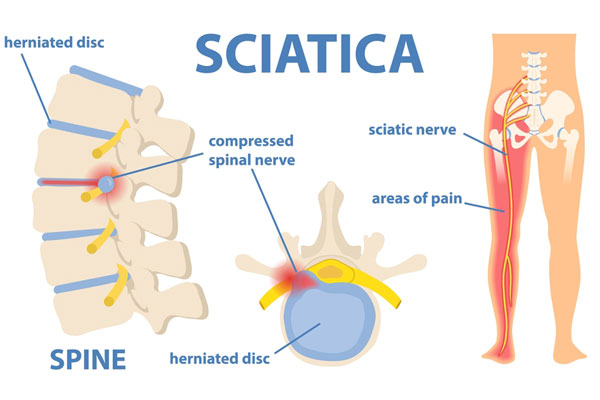
How Physiotherapy Can Help with Sciatica?
- Home
- How Physiotherapy Can Help with Sciatica?

Sciatica is a common condition that causes pain radiating from the lower back down to the legs due to irritation or compression of the sciatic nerve. This condition can be debilitating, affecting daily activities and mobility. Physiotherapy for sciatica is one of the most effective, non-invasive treatment options for managing and alleviating pain. If you are searching for the best clinic in Gurugram for sciatica treatment, Aspire Physiotherapy in Palam Vihar, Sec 23A provides comprehensive care tailored to individual needs. In this article, we will explore how physiotherapy can help with sciatica pain relief and rehabilitation.
Understanding Sciatica
Sciatica is not a standalone disorder but a symptom of underlying conditions such as a herniated disc, spinal stenosis, or piriformis syndrome. The pain can range from mild discomfort to severe, sharp pain that limits movement. Symptoms of sciatica include:
Early diagnosis and timely intervention are crucial in sciatica treatment to prevent long-term complications.
How Physiotherapy Helps in Sciatica Pain Relief
Physiotherapy plays a significant role in sciatica rehabilitation, focusing on pain management, restoring movement, and preventing recurrence. Here are some ways in which physiotherapy helps in sciatica pain relief:
1. Pain Management Techniques
Physiotherapists use various techniques to reduce pain and inflammation associated with sciatica. Some of the most effective methods include:
2. Stretching and Strengthening Exercises
Physiotherapy incorporates customized sciatica rehabilitation exercises that target core muscles and spinal alignment. Common exercises include:
3. Postural Training and Ergonomics
Poor posture is a major contributor to sciatic nerve pain. Physiotherapists provide guidance on maintaining proper posture while sitting, standing, and lifting objects. Simple modifications, such as using lumbar support while sitting or adjusting workstation ergonomics, can significantly reduce the strain on the lower back and prevent future flare-ups.
4. Manual Therapy for Sciatica Treatment
Manual therapy techniques, including spinal mobilization, myofascial release, and deep tissue massage, help in reducing muscle stiffness and nerve irritation. Physiotherapists at Aspire Physiotherapy in Palam Vihar, Sec 23A, employ specialized techniques to enhance mobility and relieve nerve compression, ensuring effective sciatica pain relief.
5. Lifestyle Modifications and Home Exercises
Physiotherapy extends beyond clinic-based treatment; it also involves educating patients about lifestyle modifications to prevent recurrence. These may include:
Why Choose Aspire Physiotherapy for Sciatica Treatment?
If you are experiencing sciatica symptoms and seeking the best clinic in Gurugram for expert care, Aspire Physiotherapy in Palam Vihar, Sec 23A, is the ideal choice. Here’s why:
Conclusion
Physiotherapy for sciatica is a proven approach to managing and treating the condition effectively. With the right combination of manual therapy, exercises, postural training, and lifestyle modifications, patients can achieve significant sciatica pain relief and prevent future episodes. If you are looking for professional and result-oriented sciatica treatment, visit Aspire Physiotherapy in Palam Vihar, Sec 23A, known as the best clinic in Gurugram for physiotherapy and rehabilitation services. Don’t let sciatica hinder your daily activities—seek expert physiotherapy care today for a pain-free life!